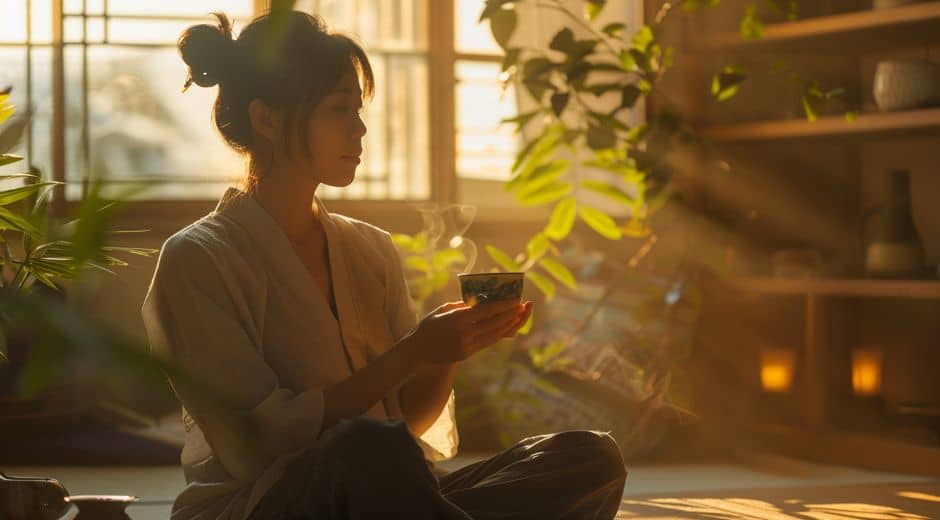Transformative Mindful Creativity and Self-Expression: Cultivating Awareness
Transformative Mindful Creativity and Self-Expression: Cultivating Awareness
In our fast-paced, distraction-filled world, finding moments of calm and self-reflection can be challenging. This is where Mindful Creativity plays a crucial role. It is the intentional engagement in creative practices—such as art, music, writing, or other forms of self-expression—while maintaining full awareness of the present moment. By combining creativity with mindfulness, individuals can cultivate emotional balance, enhance focus, and deepen self-awareness. Understanding the principles of Mindful Creativity and integrating them into daily routines offers a pathway to personal growth and mental clarity.
The Essence of Mindful Creativity
At its core, Neuroplasticity is the brain’s capacity to change and adapt in response to experiences, learning, and environmental stimuli. Neuroscientists have found that even in adulthood, the brain can generate new neurons, strengthen existing synapses, and rewire neural pathways. This adaptability is crucial for mental health and cognitive performance. It allows us to recover from stress, trauma, or injury while improving skills like concentration, problem-solving, and emotional regulation.
Research shows that the prefrontal cortex, responsible for executive functions, is particularly sensitive to experiences that promote mental clarity and emotional balance. By deliberately engaging in practices that stimulate these areas, we can take advantage of Neuroplasticity to reprogram the brain for optimal focus and calm.
The Essence of Mindful Creativity
At its core, Mindful Creativity merges two powerful concepts: the flow of creative expression and the presence of mindful awareness. Creativity alone allows us to express thoughts, emotions, and ideas, while mindfulness encourages non-judgmental observation and immersion in the present. Together, they create a mental state where the brain can engage fully with the task at hand, reduce stress, and promote emotional regulation.
Psychologists and neuroscientists have observed that creative engagement activates multiple brain regions, including those responsible for problem-solving, memory, and emotional processing. When approached mindfully, these activities strengthen neural pathways and enhance cognitive flexibility, making Mindful Creativity not just a pleasurable activity but a scientifically supported mental exercise.
Art as a Pathway to Awareness
Visual arts, such as painting, drawing, or sculpting, offer a tangible way to practice Mindful Creativity. By focusing on color, texture, and form, individuals train their attention and engage in a meditative process. Every brushstroke or pencil line becomes an opportunity to observe sensations, thoughts, and emotions without judgment.
For those looking to inspire children or teens, platforms like The Times Lifestyle provide ideas for age-appropriate creative projects that stimulate both cognitive development and emotional awareness. Similarly, StyleRadarPoint highlights innovative approaches to integrating art into daily routines, making creativity a natural part of modern life.
Music and the Mind
Engaging with music, whether through playing an instrument, singing, or composing, is another form of Mindful Creativity. Music stimulates the auditory cortex, motor regions, and areas involved in memory and emotion. Practicing music mindfully enhances attention, emotional expression, and problem-solving skills.
Listening to music with full presence—analyzing melodies, rhythms, and harmonies—can induce a state of creative flow, similar to meditation. This attentive engagement strengthens the brain’s focus networks while reducing anxiety and fostering emotional resilience.
Writing and Journaling for Self-Reflection
Writing exercises are a versatile tool for cultivating Mindful Creativity. Journaling encourages individuals to observe their thoughts and emotions, transforming abstract experiences into tangible reflections. Freewriting, poetry, and reflective essays allow for deep exploration of personal experiences, enhancing self-understanding and emotional regulation.
Regular journaling can improve clarity of thought and emotional balance. Parents and educators can utilize creative writing exercises to help children develop awareness of their feelings, encouraging constructive expression and mental well-being. For inspiration on integrating writing and reflective practices into daily life, FocusMindFlow provides structured exercises and tips.
The Psychological Benefits of Mindful Creativity
Engaging in Mindful Creativity has profound psychological benefits. Studies show that mindful engagement in creative activities increases dopamine release, the neurotransmitter associated with pleasure, motivation, and learning. This boost enhances mood, reduces stress, and reinforces positive cognitive patterns.
Furthermore, mindful creative practices foster resilience by helping individuals observe challenges and emotions non-judgmentally. Over time, the neural pathways formed during Mindful Creativity improve emotional regulation, attention span, and overall mental clarity.
Practical Ways to Incorporate Mindful Creativity
Integrating Mindful Creativity into daily routines doesn’t require professional training. Here are several practical strategies:
Dedicate a Creative Space: A quiet, organized environment encourages focus and immersion in creative tasks.
Set Intentions: Begin each session by defining a clear purpose or goal, fostering deeper engagement.
Focus on the Process, Not the Outcome: Emphasizing experience over results allows for greater presence and reduces self-criticism.
Combine Mindfulness Practices: Incorporate deep breathing or body awareness exercises before starting creative work.
Engage Regularly: Consistency strengthens neural pathways and makes mindful engagement a natural habit.
By following these strategies, anyone can cultivate Mindful Creativity and enjoy its cognitive and emotional benefits.
Mindful Creativity for Children and Teens
Introducing Mindful Creativity to younger generations offers lifelong advantages. Engaging in art, music, or writing with mindful attention supports cognitive development, enhances focus, and encourages constructive emotional expression. Activities like collaborative art projects or guided music sessions teach children how to manage emotions while cultivating problem-solving skills.
Parents and educators can explore structured programs that integrate mindfulness with creative activities. For example, The Times Lifestyle provides ideas for mindful creative projects suitable for school-aged children, while StyleRadarPoint shares innovative ways to incorporate art and music into modern lifestyles.
Digital Tools to Support Mindful Creativity
Technology can enhance Mindful Creativity when used intentionally. Apps for music composition, drawing, or journaling offer guided exercises and structured programs to foster focus and presence. However, it is important to balance screen time with offline creative activities, ensuring that digital tools complement rather than distract from mindful engagement.
Combining traditional and digital creative practices strengthens cognitive flexibility and reinforces neural patterns associated with attention and emotional regulation.
Integrating Mindful Creativity into Daily Life
To experience lasting benefits, Mindful Creativity should become a regular part of daily life. This can be as simple as:
Spending 15–20 minutes painting or sketching each morning.
Practicing mindful listening or musical improvisation during breaks.
Writing in a reflective journal before bed.
Consistency reinforces neural pathways, allowing creativity and mindfulness to become natural, synergistic components of life. Over time, this integration fosters emotional clarity, cognitive focus, and a greater sense of personal fulfillment.
Conclusion: Cultivating Awareness Through Creative Practice
Mindful Creativity is more than an artistic pursuit—it is a tool for personal growth, mental clarity, and emotional well-being. By engaging fully in creative expression with mindful attention, individuals strengthen neural pathways, enhance focus, and cultivate a resilient, balanced mind.
From children developing cognitive and emotional skills to adults seeking clarity and calm, the practices of Mindful Creativity offer universal benefits. Resources like FocusMindFlow provide exercises and guidance to integrate creative mindfulness into daily routines, while lifestyle inspiration and practical ideas can be found through The Times Lifestyle and StyleRadarPoint.
Embracing Mindful Creativity allows us to transform ordinary moments into opportunities for self-expression, reflection, and deeper awareness, fostering a more intentional and fulfilling life.
Focus Flow Forward

Grounding Techniques for a Balanced Mind
Grounding Techniques for a Balanced Mind

Stillness as a Path to Inner Awareness
Stillness as a Path to Inner Awareness

The Power of Alignment: Flowing in Harmony with Yourself
Learn how alignment helps you reconnect with your true self, find balance between mind and action, and live in a state of natural inner flow.

The Path to Stability: Strengthening Your Inner Foundation
Explore how cultivating stability in your thoughts, emotions, and routines builds mental balance, clarity, and peace in a fast-changing world.













